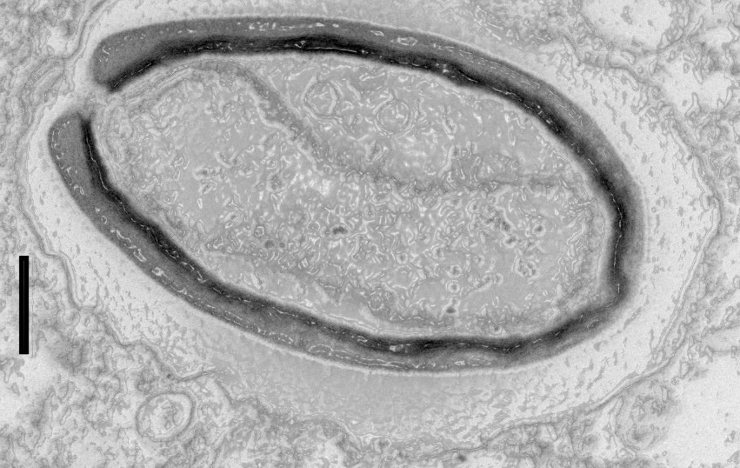In 2013, a team of researchers from the CNRS/Aix-Marseille University and the Biosciences & Biotechnology and François-Jacob institutes of the CEA discovered two giant viruses with heretofore unseen traits, and in so doing blurred the boundary between the viral and cellular worlds[1]. As large as bacteria, shaped like an ancient Greek amphora and sporting an enormous (2.7 million base pairs), atypical genome more complex than that of some eukaryotes, these new entities were named Pandoravirus. In their strangeness resides intriguing questions as to their origin.
That same team has since isolated three new Pandoravirus species in Marseille, France, Nouméa, New Caledonia and Melbourne, Australia. Adding another Pandoravirus found in Germany, the team has six species now, and has compared them using different approaches. These analyses show that despite similar forms and functions, the species share only about half of their protein-coding genes. Yet another oddity, given that most taxonomic genera share a much larger proportion of genes...
Furthermore, the new members of the genus, like the first two, have a great number of orphan genes, i.e., those coding proteins with no equivalent in other lineages. This currently unexplained characteristic sits at the heart of debates on the origins of the virus. However, what the researchers find most surprising is that the orphan genes differ from one Pandoravirus species to another, making it increasingly unlikely that they were inherited from a common ancestor.
Using a range of bioinformatics methods, the team furthermore determined that the orphan genes were nonetheless very similar to the noncoding (or intergenic) regions of the Pandoravirus genome. So, what can explain the size of the Pandoravirus genome, its diversity and the significant proportion of orphan genes found there? The research team sees only one scenario: a large number of the virus's genes develop spontaneously and randomly in the intergenic regions of the genome. Each species thus "invents" its own genes, creating a signature unique from that of the others.
These results have been shared through a press release.

Pandoravirus quercus. Thin section under electron microscopy. Scale: 100 nm.
© IGS- CNRS/AMU